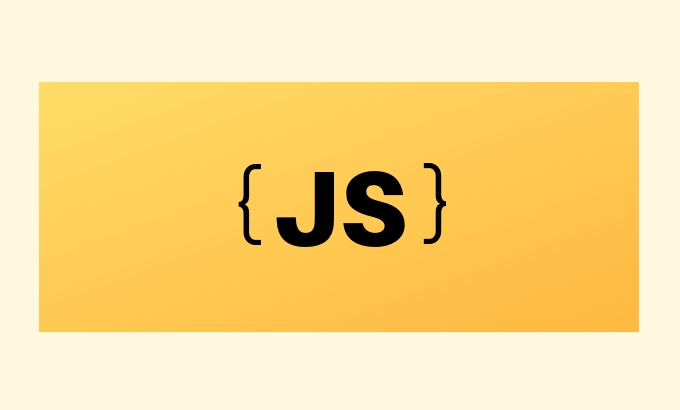Explaining Async/Await Patterns in Modern Javascript Development
Jul 08, 2025 am 01:57 AMasync/await is the way to handle asynchronous operations in JavaScript. Its core is to encapsulate Promise, making the code more intuitive. 1. The async function returns a Promise, and await is used to wait for the Promise to complete; 2. Use try/catch to catch errors, and you can manually throw exceptions according to the status code and handle them accordingly; 3. You can perform multiple tasks concurrently in conjunction with Promise.all to improve efficiency; 4. Be careful to avoid abuse of await and cause serial requests. You cannot directly use await in the top-level scope, and understand the error propagation mechanism.

Async/await is a very intuitive and concise way to handle asynchronous operations in modern JavaScript development. It is essentially a layer of encapsulation of Promise, making asynchronous code look more like synchronous code, making it easier to understand and maintain.

What is async/await?
Simply put, the async function is a function that returns a promise, and the await keyword can only be used inside the async function and is used to "wait" for a promise to complete. This can avoid the nesting and readability problems caused by traditional .then() and .catch() chain calls.

Let's give a simple example:
async function fetchData() {
const response = await fetch('https://api.example.com/data');
const data = await response.json();
return data;
} In this example, we wait for the network request to be completed through await , instead of using .then() to process the result. This method is clear and more in line with people's reading habits.

How to correctly handle errors using try/catch?
Although async/await makes the code look more synchronous, the nature of asynchronous has not changed, so error handling is still important. The recommended approach is to wrap the await operation in try/catch block, so that exceptions can be caught in the event of an error.
async function getUserData(userId) {
try {
const response = await fetch(`https://api.example.com/users/${userId}`);
if (!response.ok) throw new Error('Request failed');
return await response.json();
} catch (error) {
console.error('Failed to obtain user data:', error);
// You can choose to throw an error or return the default value throw error;
}
}- Using
try/catchis standard practice. - An error can be thrown manually according to the response status code.
- After the error is captured, you can do logging, UI prompts, etc.
Use async/await with Promise.all
Promise.all is still a very useful tool when you need to execute multiple asynchronous tasks concurrently and wait for them to complete. Combined with async/await, the code can be both efficient and clear.
async function getMultipleUsers(ids) {
try {
const promises = ids.map(id => fetch(`https://api.example.com/users/${id}`));
const responses = await Promise.all(promises);
const users = await Promise.all(res => res.json()));
return users;
} catch (error) {
console.error('Batch fetching user failed:', error);
}
}The benefits of this writing are:
- All requests are carried out concurrently, with high efficiency;
- Process the response and parse JSON respectively through two
await; - Any failure will trigger
catch.
Notes and common misunderstandings
Although async/await is very convenient, there are some easy places to get stuck:
Don't abuse await : If there is no dependency between multiple asynchronous operations, you should execute concurrently instead of serial waiting.
? Not recommended:
const a = await getA(); const b = await getB(); // In fact, it can be initiated at the same time as getA
? Recommended:
const [a, b] = await Promise.all([getA(), getB()]);
Await cannot be used directly in the top-level scope :
awaitcannot be used directly in ordinary functions or global scopes, but can only be used inasyncfunctions.Note the error propagation mechanism : Exceptions not caught by
try/catchwill become unhandled Promise rejection, which may cause the program to crash.
Basically that's it. async/await is not complicated, but to really use it well, you still have to understand the Promise mechanism behind it and how to reasonably organize the asynchronous process.
The above is the detailed content of Explaining Async/Await Patterns in Modern Javascript Development. For more information, please follow other related articles on the PHP Chinese website!

Hot AI Tools

Undress AI Tool
Undress images for free

Undresser.AI Undress
AI-powered app for creating realistic nude photos

AI Clothes Remover
Online AI tool for removing clothes from photos.

Clothoff.io
AI clothes remover

Video Face Swap
Swap faces in any video effortlessly with our completely free AI face swap tool!

Hot Article

Hot Tools

Notepad++7.3.1
Easy-to-use and free code editor

SublimeText3 Chinese version
Chinese version, very easy to use

Zend Studio 13.0.1
Powerful PHP integrated development environment

Dreamweaver CS6
Visual web development tools

SublimeText3 Mac version
God-level code editing software (SublimeText3)
 How to make an HTTP request in Node.js?
Jul 13, 2025 am 02:18 AM
How to make an HTTP request in Node.js?
Jul 13, 2025 am 02:18 AM
There are three common ways to initiate HTTP requests in Node.js: use built-in modules, axios, and node-fetch. 1. Use the built-in http/https module without dependencies, which is suitable for basic scenarios, but requires manual processing of data stitching and error monitoring, such as using https.get() to obtain data or send POST requests through .write(); 2.axios is a third-party library based on Promise. It has concise syntax and powerful functions, supports async/await, automatic JSON conversion, interceptor, etc. It is recommended to simplify asynchronous request operations; 3.node-fetch provides a style similar to browser fetch, based on Promise and simple syntax
 JavaScript Data Types: Primitive vs Reference
Jul 13, 2025 am 02:43 AM
JavaScript Data Types: Primitive vs Reference
Jul 13, 2025 am 02:43 AM
JavaScript data types are divided into primitive types and reference types. Primitive types include string, number, boolean, null, undefined, and symbol. The values are immutable and copies are copied when assigning values, so they do not affect each other; reference types such as objects, arrays and functions store memory addresses, and variables pointing to the same object will affect each other. Typeof and instanceof can be used to determine types, but pay attention to the historical issues of typeofnull. Understanding these two types of differences can help write more stable and reliable code.
 React vs Angular vs Vue: which js framework is best?
Jul 05, 2025 am 02:24 AM
React vs Angular vs Vue: which js framework is best?
Jul 05, 2025 am 02:24 AM
Which JavaScript framework is the best choice? The answer is to choose the most suitable one according to your needs. 1.React is flexible and free, suitable for medium and large projects that require high customization and team architecture capabilities; 2. Angular provides complete solutions, suitable for enterprise-level applications and long-term maintenance; 3. Vue is easy to use, suitable for small and medium-sized projects or rapid development. In addition, whether there is an existing technology stack, team size, project life cycle and whether SSR is needed are also important factors in choosing a framework. In short, there is no absolutely the best framework, the best choice is the one that suits your needs.
 JavaScript time object, someone builds an eactexe, faster website on Google Chrome, etc.
Jul 08, 2025 pm 02:27 PM
JavaScript time object, someone builds an eactexe, faster website on Google Chrome, etc.
Jul 08, 2025 pm 02:27 PM
Hello, JavaScript developers! Welcome to this week's JavaScript news! This week we will focus on: Oracle's trademark dispute with Deno, new JavaScript time objects are supported by browsers, Google Chrome updates, and some powerful developer tools. Let's get started! Oracle's trademark dispute with Deno Oracle's attempt to register a "JavaScript" trademark has caused controversy. Ryan Dahl, the creator of Node.js and Deno, has filed a petition to cancel the trademark, and he believes that JavaScript is an open standard and should not be used by Oracle
 Handling Promises: Chaining, Error Handling, and Promise Combinators in JavaScript
Jul 08, 2025 am 02:40 AM
Handling Promises: Chaining, Error Handling, and Promise Combinators in JavaScript
Jul 08, 2025 am 02:40 AM
Promise is the core mechanism for handling asynchronous operations in JavaScript. Understanding chain calls, error handling and combiners is the key to mastering their applications. 1. The chain call returns a new Promise through .then() to realize asynchronous process concatenation. Each .then() receives the previous result and can return a value or a Promise; 2. Error handling should use .catch() to catch exceptions to avoid silent failures, and can return the default value in catch to continue the process; 3. Combinators such as Promise.all() (successfully successful only after all success), Promise.race() (the first completion is returned) and Promise.allSettled() (waiting for all completions)
 What is the cache API and how is it used with Service Workers?
Jul 08, 2025 am 02:43 AM
What is the cache API and how is it used with Service Workers?
Jul 08, 2025 am 02:43 AM
CacheAPI is a tool provided by the browser to cache network requests, which is often used in conjunction with ServiceWorker to improve website performance and offline experience. 1. It allows developers to manually store resources such as scripts, style sheets, pictures, etc.; 2. It can match cache responses according to requests; 3. It supports deleting specific caches or clearing the entire cache; 4. It can implement cache priority or network priority strategies through ServiceWorker listening to fetch events; 5. It is often used for offline support, speed up repeated access speed, preloading key resources and background update content; 6. When using it, you need to pay attention to cache version control, storage restrictions and the difference from HTTP caching mechanism.
 Leveraging Array.prototype Methods for Data Manipulation in JavaScript
Jul 06, 2025 am 02:36 AM
Leveraging Array.prototype Methods for Data Manipulation in JavaScript
Jul 06, 2025 am 02:36 AM
JavaScript array built-in methods such as .map(), .filter() and .reduce() can simplify data processing; 1) .map() is used to convert elements one to one to generate new arrays; 2) .filter() is used to filter elements by condition; 3) .reduce() is used to aggregate data as a single value; misuse should be avoided when used, resulting in side effects or performance problems.
 JS roundup: a deep dive into the JavaScript event loop
Jul 08, 2025 am 02:24 AM
JS roundup: a deep dive into the JavaScript event loop
Jul 08, 2025 am 02:24 AM
JavaScript's event loop manages asynchronous operations by coordinating call stacks, WebAPIs, and task queues. 1. The call stack executes synchronous code, and when encountering asynchronous tasks, it is handed over to WebAPI for processing; 2. After the WebAPI completes the task in the background, it puts the callback into the corresponding queue (macro task or micro task); 3. The event loop checks whether the call stack is empty. If it is empty, the callback is taken out from the queue and pushed into the call stack for execution; 4. Micro tasks (such as Promise.then) take precedence over macro tasks (such as setTimeout); 5. Understanding the event loop helps to avoid blocking the main thread and optimize the code execution order.






